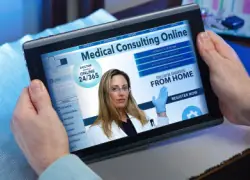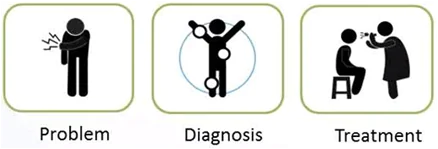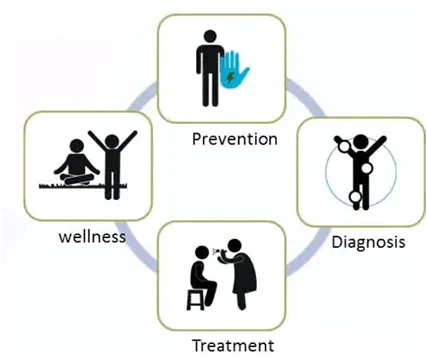
The healthcare spending in the US has crossed $3.2 trillion last year and grew by 4.95%; that’s twice as fast as the US economy grew (at 2.9%). This upward trend in healthcare spending is projected to continue and reach $5.4 trillion by 2024.
Being such a vast industry; it has also emerged as a complex and expensive ecosystem, consuming around 18% of the US GDP. Though the healthcare industry has made significant improvements in the usage of technologies and methodologies, there remains a lot more to be desired in the engagement model among patients, providers, and payers, for it to utilize the full potential of technologies and provide an ease of patient wellbeing and care.
Consumers/Insurance purchasers demand high service and low out-of-pocket costs, payers want to select risk and limit costs as well. Similarly, patients expect high-quality treatment on-time and providers ask for better technologies to monitor and manage their patients with the best service delivery time. Let us look at the various challenges faced by the healthcare industry stakeholders with the traditional healthcare system:
- Scattered patient data into multiple systems
- Shortages of caregivers
- Infrastructure limitations
- Miscommunication and lack of coordination (A recent report says, 80% of the medical errors happen due to miscommunication and lack of coordination)
Elaborating in simpler terms; every patient is unique in their own way, they need specific attention from the doctors in order to get quality treatment, and in the current healthcare model, it would require a lot of time, money and patience to get the best treatment. If we take the case of doctors/providers, it is very difficult and time-consuming for them to engage with each and every patient, frequently and easily due to lack of appropriate connection with the patients, lack of coordination, and the dearth of latest data availability of the patient for a better prognosis.
How Next-gen healthcare solutions are transforming the patient engagement model
In the traditional patient engagement model, the diagnosis part comes only after any problem has been witnessed, followed by the treatment part. It will not be unfair to state that in the current model the focus on prevention is still in its infancy.

On the contrary, the next-gen healthcare solutions follow a preventive care approach as shown below.

The new model starts with the prevention part facilitated by various technology solutions like fitness bands, smart watches, electronic pill bottles & pouches, apps to connect easily with patients, providers, and payers. These solutions not only help in improving a patient’s health but also in preventing them from various chronic diseases.
These tech solutions infused with the latest technologies like sensor technology, cloud, data science, mobility, etc. perform seamlessly and without much of maintenance requirements. Moreover, these tech solutions help patients, providers, and payers in managing and maintaining a large amount of their data, transform into actionable insights and help to take apt decisions in time.
Let us see few of these new innovations in brief…
Electronic pill bottles & pouches:
These bottles have sensor technologies that keep a track of the patient’s medicine consumption. It ensures that the patient has taken his medicine on time in the prescribed dosage. In case, if a dosage is missed or it seems there is excess consumption, the smart pill bottle alerts the patient with an automated call or message on his/her mobile.
Smart Watches:
Smart watches have emerged as one of the best innovations in healthcare and fitness, by not only empowering patients/users by tracking their vital functions, but providers as well with their remote monitoring capabilities. A patient might simply with the touch of a button inform the caregivers of any emergency situation. Smartwatches have also provided a new means of interaction between patient and provider, with doctors sending in customized messages, prescriptions to an individual or a group of people.
Various ISVs and startups are coming up with new ideas and innovations these days after witnessing the widespread acceptance of the healthcare tech solutions. Their focus is mostly on providing remote monitoring systems, prevention focused wearables and devices and better diagnosis tech solutions that provide most accurate and latest data in the form of actionable insights. And for this, numerous technologies and techniques are being utilized to transform patient engagement model with next-gen healthcare solutions.
Stay tuned for the next blog to know more about the technologies and techniques that have helped the healthcare industry to transform this way.
Harbinger Systems is participating as an exhibitor at the 2016 HiMSS conference, being held from February 29 to March 4, 2016, at Sands Expo and Convention Center, Las Vegas, NV. Meet us at booth #8450!





